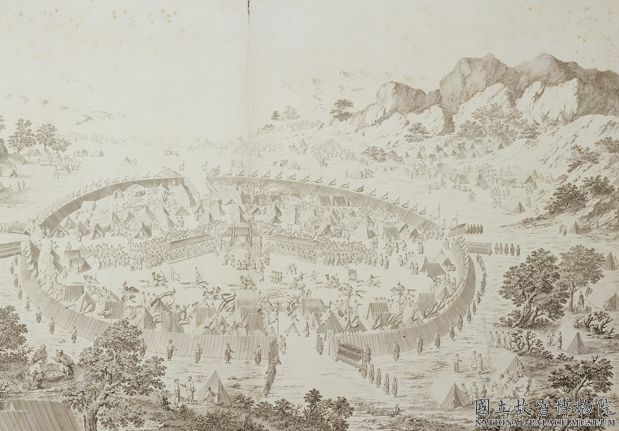[Ke Jiusi’s Painting Axis of Ink Bamboo in the Pavilion of Meditation in the Qing Dynasty]
The Painting Axis of Ink Bamboo in the Pavilion of Meditation in the Qing Dynasty, Yuan Dynasty, Ke Jiusi’s painting, paper edition, ink brush, 132.8 cm in length and 58.5 cm in width
This self-knowledge: “On the 13th of December, the fifth anniversary of the Zhiyuan era, I left it in the temple of the Qing Dynasty, because I wrote this volume. Dan Qiu wrote the title.” The seal was “Ke Shi Jingzhong”
Bamboo has become a very popular subject of painting in the Yuan Dynasty, since it was advocated by Wen Tong and others in the Song Dynasty, because it was endowed with the personality symbol of “being modest and different from the grass, and more powerful than ordinary wood” by traditional literati. From the perspective of technique, there are two kinds of “painting bamboo” that outlines the color and “writing bamboo” that is freehand brushwork. This picture belongs to the painting method of “writing bamboo”. Ke Jiusi once advocated that “the bamboo painting should be done with seal law, the branches should be done with grass calligraphy, and the leaves should be done with eight points or with Lu Gong’s penmanship. The author writes in light ink, and draws it out with a straight line, which is like a seal book. The two ends of the bamboo knot are hung with ink again, but it is natural without hooking the knot. The writing of bamboo leaves is calm and steady, just as the later generations described his ink bamboo as “big leaves and long tips move with a high voice”. With deep ink as the surface and light ink as the back, it is precisely from the Wentong. (Mi Fu once said, “… (painting bamboo) takes deep ink as the surface and light ink as the back, starting from the beginning of Wentong.”) Together with vigorous twigs interspersed between them, the clumps of bamboo show a lively charm in the solemn and honest
Description of Shiqu Treasure Collection, the first edition, the Hall of Nourishing the Heart, which was published in the Qing Dynasty.
![图片[1]-Ke Jiusi’s ink bamboo picture axis in the Qing Temple-China Archive](https://chinaarchive.net/Yuan dynasty/painting/27475[1024].jpg)
![[Qing Dynasty] British female painter—Elizabeth Keith, using woodblock prints to record China from the late Qing Dynasty to the early Republic of China—1915-China Archive](https://chinaarchive.net/wp-content/uploads/2022/11/image-191x300.png)




